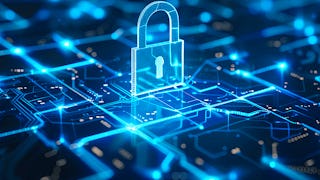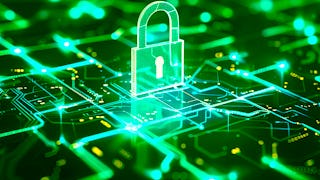What Is Data-Driven Decision-Making (DDDM)?
November 25, 2024
Article · 6 min read
Cultivate your career with expert-led programs, job-ready certificates, and 10,000 ways to grow. All for $25/month, billed annually. Save now


(288 reviews)
(288 reviews)

Add to your LinkedIn profile
14 assignments


Add this credential to your LinkedIn profile, resume, or CV
Share it on social media and in your performance review

In this course, you will learn about software defined networking and how it is changing the way communications networks are managed, maintained, and secured.
This week, I'll introduce an overview of the course and then dive into the history and evolution of SDNs.
11 videos4 readings2 assignments
In this module, you will learn about the motivation and history behind the separation of the control and data plane, as well as the challenges and opportunities that this architectural paradigm offers.
8 videos2 readings3 assignments
In this lesson, you will gain experience with OpenFlow/SDN control, gain some exposure to different SDN controllers, learn about the tradeoffs of using different SDN controllers, and gain some experience of using SDN to customize control-plane behavior.
8 videos1 reading1 assignment
By the end of this module, you should have a good understanding of what network virtualization is, what it is used for, and how it relates to software defined networking.
11 videos1 reading3 assignments
This module is relatively independent from some of the other modules, as programmable data planes involve new types of technology. Still, you should by now have a very good understanding of SDN-based control and virtualization. OpenFlow's design was somewhat of an accident of the hardware support that was available at the time. More recently, people are exploring how programmable hardware can help us design a control protocol with the benefit of being able to change the data plane.
10 videos1 reading2 assignments
In this part of the course, you'll learn about programming languages and controllers that make this programmability possible. We will focus on one language in particular, Pyretic, which is from the Frenetic family of languages. We will also look at a runtime and northbound API called Resonance, which allows network programmers to write policies that respond to changing network conditions (e.g., security events, shifts in peak vs. off-peak time, traffic fluctuations or link failures).
7 videos1 reading1 assignment
In this module, we will apply that knowledge to explore how SDN can be used to solve problems in various networking domains. We'll start by looking at data-center networking, where SDN has arguably gained the strongest foothold (to date). We'll then explore applications of SDN to interdomain routing, where new applications and deployments are emerging. Finally, we'll explore the application of SDN in home networks, which has seen some preliminary work, deployments, and ideas.
8 videos1 reading1 assignment
In this module, we'll be looking at another control framework built using Pyretic called "Kinetic". Kinetic is a domain-specific language embedded in Pyretic that allows programmers and network operators to automatically verify the correctness properties of the control program. Your previous experience with Pox and Pyretic should provide you with very useful experience and perspective for comparing the three ways of programming a controller. In the assignment, we ask you to compare Kinetic to either Pox or Pyretic, so the experience you gained from those assignments should prove very useful.
9 videos1 reading1 assignment
We asked all learners to give feedback on our instructors based on the quality of their teaching style.

One of the world's premier academic and research institutions, the University of Chicago has driven new ways of thinking since our 1890 founding. Today, UChicago is an intellectual destination that draws inspired scholars to our Hyde Park and international campuses, keeping UChicago at the nexus of ideas that challenge and change the world.
Georgia Institute of Technology
Course

LearnQuest
Course

Juniper Networks
Course

Course




288 reviews
72.56%
17.36%
6.25%
1.04%
2.77%
Showing 3 of 288
Reviewed on Feb 9, 2021
One of the best courses offered by Coursera. Thank you for providing knowledge for free. I am grateful to you guys.
Reviewed on Sep 8, 2020
give a comprehensive overview of SDN networking and provide details about tools and technologies from the state of art.
Reviewed on Apr 13, 2021
Thank you all, those who take part in preparing and delivering this course. The course is very helpful to understand SDN and its benefits and limitation.

Unlimited access to 10,000+ world-class courses, hands-on projects, and job-ready certificate programs - all included in your subscription
Earn a degree from world-class universities - 100% online
Upskill your employees to excel in the digital economy
Access to lectures and assignments depends on your type of enrollment. If you take a course in audit mode, you will be able to see most course materials for free. To access graded assignments and to earn a Certificate, you will need to purchase the Certificate experience, during or after your audit. If you don't see the audit option:
The course may not offer an audit option. You can try a Free Trial instead, or apply for Financial Aid.
The course may offer 'Full Course, No Certificate' instead. This option lets you see all course materials, submit required assessments, and get a final grade. This also means that you will not be able to purchase a Certificate experience.
When you purchase a Certificate you get access to all course materials, including graded assignments. Upon completing the course, your electronic Certificate will be added to your Accomplishments page - from there, you can print your Certificate or add it to your LinkedIn profile. If you only want to read and view the course content, you can audit the course for free.
You will be eligible for a full refund until two weeks after your payment date, or (for courses that have just launched) until two weeks after the first session of the course begins, whichever is later. You cannot receive a refund once you’ve earned a Course Certificate, even if you complete the course within the two-week refund period. See our full refund policy.
Yes. In select learning programs, you can apply for financial aid or a scholarship if you can’t afford the enrollment fee. If fin aid or scholarship is available for your learning program selection, you’ll find a link to apply on the description page.
Financial aid available,
New to Coursera?
Having trouble logging in? Learner help center
This site is protected by reCAPTCHA Enterprise and the Google Privacy Policy and Terms of Service apply.